
IC 2800 known as PGC 3543021, is a late type spiral galaxy located 750 million light-years away from the Milky Way in the Leo constellation. It has a diameter of 110,000 light-years and was discovered on March 27, 1906, by German astronomer, Max Wolf. It has a surface brightness of magnitude 24.0 and is located at right ascension (11:24:27:08) and declination (12:12:31.70).

IC 2628 is a type SBa barred spiral galaxy with a ring located in Leo constellation. It is located 600 million light-years from the Solar System and has an approximate diameter of 135,000 light-years. IC 2628 was discovered on March 27, 1906, by Max Wolf and is classified as a ring galaxy due to its peculiar appearance. The galaxy has a surface brightness of magnitude 23.8 and located at right ascension (11:11:37.8) and declination (+12:07:21) respectively.

IC 4537 is a type S0-a lenticular galaxy located in the Serpens constellation. It is located 736 million light-years from the Solar System and was found by astronomer Edward Emerson Barnard although the year of discovery was unknown. IC 4537 has a surface brightness of magnitude 23.9 and a right ascension of and declination. IC 4537 is apparently located a few miles away from the globular cluster Messier 5.

IC 1166 are a pair of galaxies in the Corona Borealis constellation comprising IC 1166 NED01 and IC 1166 NED02. They are located 977 million light-years from the Solar System and were discovered on July 28, 1892, by Stephane Javelle.
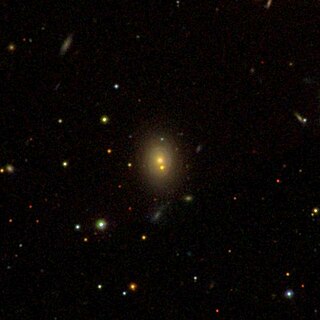
IC 1185 is a type Sab spiral galaxy located in Hercules. It is located 420 million light-years from the Solar System and has an approximate diameter of 115,000 light-years. IC 1185 was discovered on June 8, 1888, by astronomer Guillaume Bigourdan and is a member of the Hercules Cluster. IC 1185 has a surface brightness of magnitude 22.7 and presents a double nucleus, which might represent a late stage of galaxy merger.

NGC 3750 is a lenticular galaxy with a bar located in the constellation of Leo. It is located 450 million light-years from the Solar System and was discovered by Ralph Copeland on February 9, 1874.

NGC 3748 is a lenticular galaxy with a bar located in the Leo constellation. It is located 440 million light-years away from the Solar System and was discovered by Ralph Copeland on April 5, 1874, but also observed by Hermann Kobold, Lawrence Parsons and John Louis Emil Dreyer.

NGC 3754 is a small barred spiral galaxy located in Leo. It is located 447 million light-years away from the Solar System and was discovered on April 5, 1874, by Ralph Copeland.

IC 1189 is a S0-a lenticular galaxy with a ring structure located in Hercules. It is located 557 million light-years away from the Solar System and has an approximate diameter of 145,000 light-years. IC 1189 was discovered on June 7, 1888, by Lewis Swift. It is a member of the Hercules Cluster.
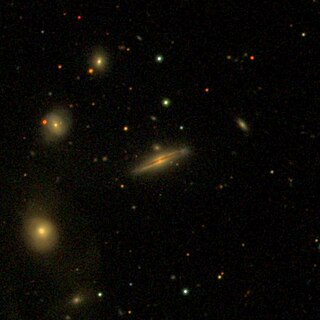
IC 1192 is an edge-on barred spiral galaxy located in Hercules. It is located 543 million light-years from the Solar System and has a diameter of approximately 90,000 light-years. IC 1192 was discovered by Stephane Javelle on August 13, 1892. It is a member of the Hercules Cluster.
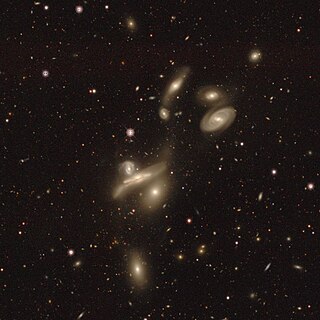
NGC 3745 is a lenticular galaxy with a bar structure located in the constellation of Leo. NGC 3745 is located 471 million light-years away from the Solar System and was discovered by Ralph Copeland on April 5, 1874, but also observed by Hermann Kobold, Lawrence Parsons and John Louis Emil Dreyer.

NGC 3751 is a type E-S0 lenticular galaxy located in the Leo constellation. It is located 450 million light-years away from the Solar System and was discovered by Ralph Copeland on April 5, 1874.
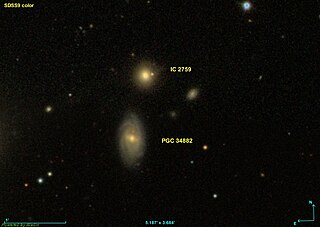
IC 2759 is a small type E elliptical galaxy located in the constellation of Leo. It is located 350 million light-years away from the Solar System and was discovered on April 24, 1897, by Guillaume Bigourdan. Sometimes IC 2759 is confused with the spiral galaxy, PGC 34882 which is located south of the galaxy.

IC 5145 is a type Sab spiral galaxy located in the constellation Pegasus. It is located 356 million light-years from the Solar System and was discovered by Edward Emerson Barnard, although the year he discovered it is unknown.

IC 2498 known as PGC 27668, is a type Sb barred spiral galaxy located in constellation Leo. It is located 469 million light-years away from the Solar System and was discovered by Stephane Javelle on April 30, 1896.

IC 3622 also known as PGC 3793395, is a large barred spiral galaxy located in constellation Coma Berenices. It is located 980 million light-years from the Solar System and has a diameter of 175,000 light-years. IC 3622 was discovered by Royal Harwood Frost on May 7, 1904.
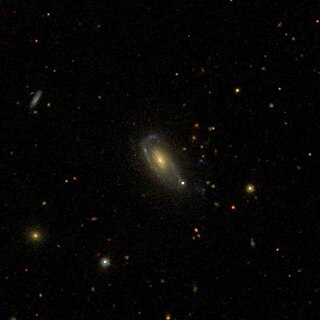
IC 1050 is a type Sbc spiral galaxy located in constellation Boötes. It is located 491 million light-years from the Solar System and has an approximate diameter of 130,000 light-years. IC 1050 was discovered by Stephane Javelle on June 3, 1892.

IC 3683 known as PGC 1637726, is a barred spiral galaxy with a ring structure located in Coma Berenices. It is located 853 million light-years from the Solar System and has an apparent dimension of 0.30 x 0.2 arcmin. IC 3683 was discovered by Max Wolf on January 27, 1904.

IC 4588 is a type E elliptical galaxy located in the constellation Serpens. It is located 729 million light-years from the Solar System and has a dimension of 0.30 x 0.3 arcmin meaning its diameter is 64,000 light-years across. IC 4588 was discovered by Stephane Javelle on July 15, 1903.

IC 2657 is a type E elliptical galaxy located in the constellation Leo. Its redshift is 0.167816, which means IC 2657 is 2.22 billion light-years away. IC 2657 is the second most distant Index Catalogue object after IC 4017 and the brightest cluster galaxy inside a small galaxy group called WHL J111508.7+134141. A large galaxy, measuring approximately 0.30 x 0.3 arcmin, it spans about 202,000 light-years across and was discovered by Max Wolf on March 27, 1906.

















